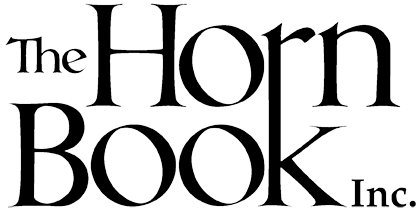Astronomy--Jupiter
19 Reviews
(4)
K-3
Dash!: Planets series.
Facts about the eight planets are conveyed in simple choppy sentences constructed for more-advanced beginning readers. Each book includes basic stats about the planet's size, distance from Earth, average temperature, as well as distinctive features such as the storms of Neptune or the crater fields of Mercury. A summary of exploratory missions is included. Images from those missions, as well as colorful artistic renditions, illustrate the spreads. Glos., ind. Review covers these Dash!: Planets titles: Earth, Jupiter, Mars, Mercury, Neptune, Saturn, Uranus, and Venus.
Reviewer: Danielle J. Ford
(3)
4-6
Illustrated by
Rebecca Evans.
Growing up in seventeenth-century Denmark, Ole Romer wondered why lightning appeared before thunder sounded. Later, as an astronomer in Paris, Romer's observations of Jupiter's moon (Io) led him to calculate the speed of light. Dense scientific information is lightened by comic-panel illustrations with speech-bubble jokes about ice cream, plumbing, and butts. Budding scientists will enjoy learning the slow process of scientific discovery. Timeline.
Reviewer: Janet Dawson
(3)
K-3
Seedlings: Planets series.
Beginner facts about the planets in our solar system are bookended with a greeting ("Hello, Mars!") and farewell ("Goodbye, Earth!"). The simple sentences are accompanied by images that include familiar photographs of the various planets as well as artistic renditions that effectively convey atmospheric conditions and landscapes. Also available in Spanish. Reading list, websites. Glos., ind. Review covers these Seedlings: Planets titles: Earth, Jupiter, Mars, Mercury, Uranus, Venus, Neptune, and Saturn.
Reviewer: Danielle J. Ford
(4)
YA
With Earth inhospitable, twenty-four teens vie for six spots on a mission to colonize Europa, one of Jupiter's moons. As they train, Italian championship-swimmer Leo and Iranian American science-whiz Naomi begin to doubt what they've been told about Europa and the risks they're taking. Their romance is rushed, but the mystery behind Europa is the real draw; Monir leaves plenty questions to answer in future installments.
Reviewer: Lauren Chambers
(4)
K-3
Xtreme Spacecraft series.
These books for mid-elementary space enthusiasts profile prominent missions as well as the planets, stars, and technologies they studied. Each volume explains the purpose of the mission, describes the launch, then highlights some of the major findings. Photos of the spacecrafts and diagrams (with tiny details and -type) illustrate the brief texts; "xtreme" facts about the solar system appear in sidebars. Glos., ind. Review covers these Xtreme Spacecraft titles: Cassini, Curiosity Rover, Hubble Space Telescope, International Space Station, New Horizons, and Rosetta.
Reviewer: Danielle J. Ford
(4)
K-3
Planets series.
These wide-trim books combine simple informational texts with large color images of the described features. Each follows the same uninspiring script: a definition of the solar system and the planet's place within it; facts about the planet, including composition, atmospheric conditions, temperature, and/or rotation and revolution lengths; and visibility from Earth. There are four other spring 2015 books in this series. Glos., ind. Review covers the following Planets titles: Jupiter, Mars, Neptune, and Venus.
Reviewer: Danielle J. Ford
(4)
K-3
Looking Glass Library: The Planets series.
Illustrated by
Scott Burroughs.
In this series, a girl or boy space traveler, accompanied by a pet dog or cat, undertakes a space mission to explore the title planet. The information, though selective, is succinct and easy to understand. Digital cartoon illustrations look 1950s retro-ish. Not a required purchase for libraries, but the format may engage readers to seek out meatier information. Reading list. Glos., ind. Review covers these Looking Glass Library: The Planets titles: Your Mission to Mars, Your Mission to Jupiter, Your Mission on Earth, and Your Mission to Mercury.
Reviewer: Cyrisse Jaffee
(4)
K-3
Early Bird Astronomy series.
Short, accessible chapters offer an introduction to planets. Each planet's position in the solar system is noted, with particular information paid to its unique features (e.g., Saturn's rings, Jupiter's clouds). Accurate information about data-gathering equipment such as the Voyagers is also included. Colorful captioned illustrations (some shared within the series) and less effective stock photos illustrate the texts. Reading list, websites. Glos., ind. Review covers these Early Bird Astronomy titles: Jupiter, Pluto, Saturn, and Earth.
Reviewer: Frieda F. Bostian
(3)
YA
Solar System series.
This exhaustive coverage of planetary science includes cutting edge theory as well as established facts about planet formation and features, recent and historical exploration and technical innovations, and related physical science concepts. The complex explanations and diagrams are very sophisticated and require advanced knowledge in science and mathematics to interpret. They will be thoroughly appreciated by those who can handle it. Reading list, websites. Bib., glos., ind. Review covers these Solar System titles: Asteroids, Meteorites, and Comets, The Earth and the Moon, Jupiter and Saturn, Mars, The Sun, Mercury, and Venus, and Uranus, Neptune, Pluto, and the Outer Solar System.
Reviewer: Danielle J. Ford
(4)
K-3
Solar System series.
Double-page spreads provide very basic information on topics such as Earth's crust, atmosphere, and weather; the size, structure, and rotation of other planets; and the formation and lifespan of stars. The flat, repetitive text also touches on methods used to study and explore these solar bodies. The books are illustrated with crisp color photos. There are six other spring 2004 books in this series. Websites. Glos., ind. Review covers these Solar System titles: Earth, Jupiter, Mars, The Moon, Neptune, and Stars.
Reviewer: Peter D. Sieruta
(4)
K-3
Our Universe series.
Illustrated with color photos, each of these small, square books presents basic facts about a particular body in the solar system (or, in the case of Solar System, the nine planets). Independent readers would be much better served by Seymour Simon's series on the planets, but these brief volumes provide encyclopedia-style information in an easy-to-digest manner. There are seven other fall 2003 books in this series. Reading list, websites. Glos., ind. [Review covers these Our Universe titles: Jupiter, Mars, The Moon, Pluto, Saturn, and The Solar System.]
Reviewer: Kitty Flynn
(3)
4-6
Isaac Asimov's 21st Century Library of the Universe: The Solar System series.
Hantula has impressively revised and updated the books in this series--originally published between 1988 and 1990. Each volume covers origins, characteristics, atmosphere, and scientific research findings. An accessible text is accompanied by well-chosen color photos and clear diagrams. Lists of suggested reading, "places to visit," and Internet sources are appended. There are six other fall 2002 books in this series. Glos., ind. [Review covers these Isaac Asimov's 21st Century Library of the Universe titles: Earth, Jupiter, Mars, Neptune, Pluto and Charon and The Sun.]
Reviewer: Harry Clement Stubbs
(3)
YA
Worlds Beyond series.
In two books in this series, Miller covers the history of each planet's discovery, its physical composition and atmosphere, and past and future exploration. Both texts contain minor errors, but the paintings are magnificent and, like the diagrams and photographs included, well captioned. A list of websites is appended. Bib., glos., ind. [Review covers these Worlds Beyond titles: Jupiter and Venus.]
Reviewer: Harry Clement Stubbs
(3)
K-3
Our Solar System series.
The brevity and image-heavy format of these series books don't reflect their sophisticated content: each book provides information on its subject's discovery, key characteristics, composition, and exploration. Vivid captioned color images, occasionally spanning two pages, reinforce the texts' observations. Interesting facts, such as the length of a day on the featured planet in terms of Earth hours, are scattered throughout. Reading list, websites. Glos., ind. [Review covers these Our Solar System titles: Jupiter and Mercury.]
Reviewer: Nell Beram
(4)
4-6
Blastoff! series.
The books in this series provide up-to-date descriptions of astronomers' present knowledge of each planet and Earth's moon, with considerable attention given to the sources of information (visiting spacecraft, the Hubble telescope, ground-based observations, mathematical inference). Errors are few, though the texts are rather dry. The many well-captioned photos, illustrations, and diagrams are adequate. Bib., glos., ind. [Review covers these Blastoff! titles: Jupiter, Earth and the Moon, Neptune, Mars, Saturn.]
Reviewer: Harry Clement Stubbs
(4)
4-6
Planet Library series.
This clearly written series is quite up-to-date and includes many spacecraft discoveries, such as that of extra-solar planets. Each volume contains a few errors, but the diagrams are well done and the photos are generally well chosen and captioned. Glos., ind.
Reviewer: Harry Clement Stubbs
(4)
K-3
Galaxy series.
These are adequate, up-to-date discussions about the nine planets and the sun in our solar system. Color photos and diagrams are well chosen; the stilted texts contain a few questionable or ambiguous word choices but are generally accurate. In addition to a list of Internet sites and addresses, each volume includes a simple activity to demonstrate physical concepts such as magnetic fields or the phases of the moon. Bib., glos., ind.
Reviewer: Harry Clement Stubbs
(3)
K-3
True Book series.
These simply written texts provide solid, up-to-date information about current knowledge of the outer planets, acquired mostly from space probes. The captioned color photos are generally well chosen, and the odd nature of the interiors of the gas giants is well described for the intended audience. Lists of organizations and online sites for more information are provided. Bib., glos., ind.
Reviewer: Harry Clement Stubbs
(3)
4-6
Countdown to Space series.
For the most part, these six books take a historical rather than a scientific look at various aspects of the U.S. space program. Mars and Moon present possible scenarios for future astronautic missions. Cole covers both the rewards and the dangers of space travel. The accessible texts are accompanied by plenty of well-chosen and well-captioned photos and diagrams. Bib., glos., ind.
Reviewer: Harry Clement Stubbs
19 reviews
We are currently offering this content for free. Sign up now to activate your personal profile, where you can save articles for future viewing.





















